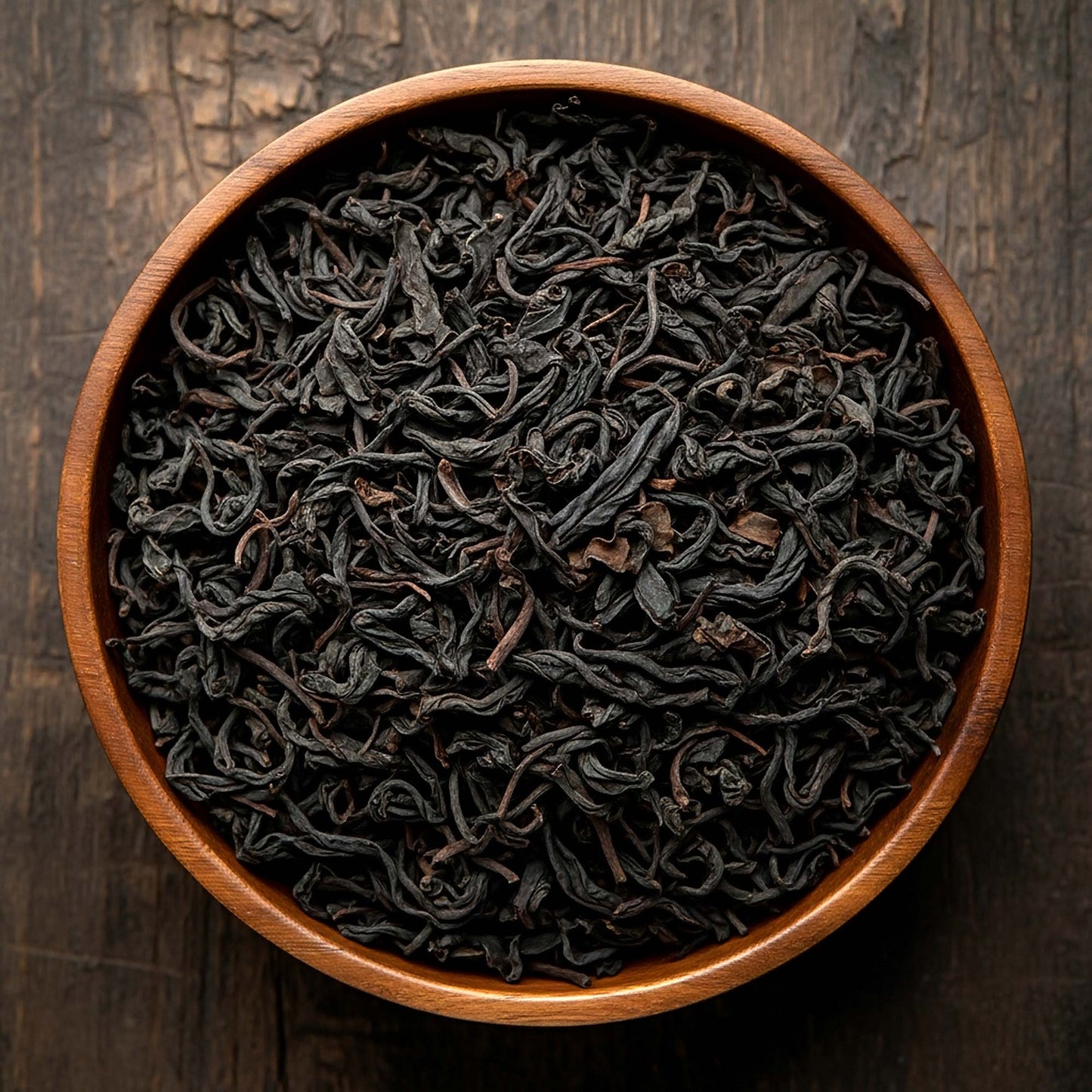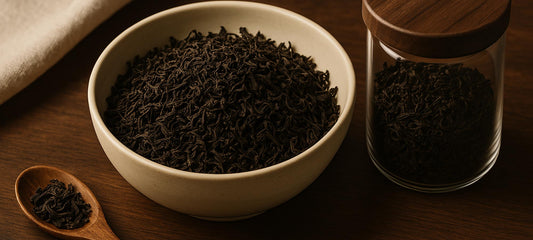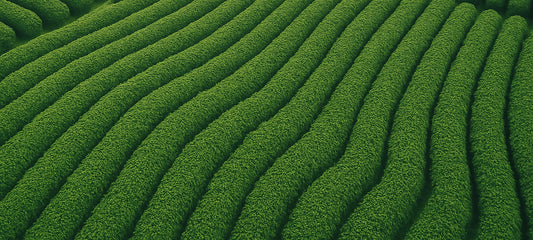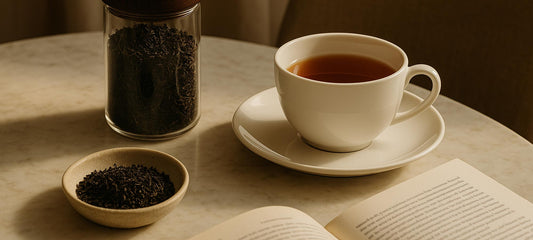The Art of Tasting Tea: Notes, Aroma, Texture, Time
Estimated read time: 6 minutes.
To taste tea is to pay attention.
Not just to the flavour, but to the silence between sips. To the way warmth settles behind the sternum. To the texture of the liquor, the scent that rises, the aftertaste that lingers like memory.
It’s not about right or wrong. It’s not about expertise.
It’s about being present with the leaf—and letting it speak.
This is a guide to tasting loose leaf tea with care.
Before You Begin
You don’t need a cupping set or scale. Just a few quiet things:
- A tea you’re curious about
- Water heated with care
- A vessel that feels right in your hands
- Time
Choose a moment when you won’t be interrupted.
Even a few minutes of stillness will change how you taste.
Step 1: Observe the Dry Leaf
Before water touches it, the leaf already tells part of the story.
Look at the shape. Rolled, twisted, needle-like, curled.
Notice the colour—deep green, golden brown, silver-tipped.
Inhale gently. What do you notice? Dried hay? Cocoa? Plum? Seaweed?
These are not flavour notes. Not yet. They’re promises.
Step 2: Pour and Watch
As you add water, the leaves begin to unfurl.
Watch them move. Some rise and fall. Some swirl. Some stay still.
This moment is part of the tasting.
It’s the first release—the first breath of the leaf as it returns to life.
Step 3: Inhale the Steam
Lean in.
The aroma at this stage is fleeting, soft, complex.
This is where many of the tea’s top notes live—floral, grassy, citrus, or stone fruit. The volatile oils rise with the steam.
What do you notice first? What disappears quickly?
Don’t try to name everything. Just observe.
Step 4: Sip and Let It Settle
Take a small sip and hold it in the mouth.
Let it move across the tongue. Notice:
- Texture — Is it silky, creamy, thin, brothy, drying?
- Weight — Does it feel light and clean, or rich and grounding?
- Flavour — Start broad: floral, vegetal, sweet, bitter, nutty, roasted
- Development — Does it change? Linger? Evaporate?
Swallow slowly. Wait.
Some of the most beautiful flavours arrive after the sip is gone.
Step 5: Second Steep, Second Story
Many loose leaf teas reveal more in the second infusion.
Repeat the process.
Notice what’s changed. Sometimes the bitterness softens. Sometimes sweetness emerges. Sometimes an entirely new aroma appears.
This is not a trick. It’s the tea’s memory unfolding.
How to Describe What You Taste (Without Needing a Vocabulary List)
Flavour is personal. Memory-based.
A tea might remind you of linen in spring. Or toasted cashews. Or the warmth of an old book spine.
You don’t need formal language. But if you want a guide, think in layers:
- Top Notes: Bright, fleeting—floral, citrus, herbs
- Mid Notes: Rounder, deeper—stone fruit, grains, vegetal, honey
- Base Notes: Heavy, grounding—roast, wood, cocoa, minerality
Also notice:
- Sweetness vs dryness
- Clean vs complex
- Whether it builds or fades
There is no correct answer. Only honest attention.
Final Thoughts: Tasting as Ritual
To taste tea well is not to dissect it. It is to receive it.
As something grown, gathered, crafted—now steeped in water before you.
The more often you taste with intention, the more you notice.
And the more you notice, the more the leaf gives back.
Every cup becomes a conversation.
Not loud. Not fast. But true.






